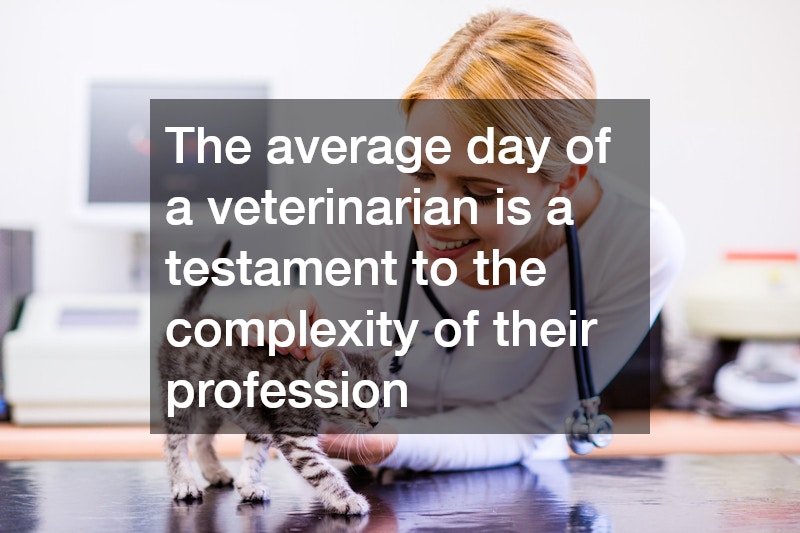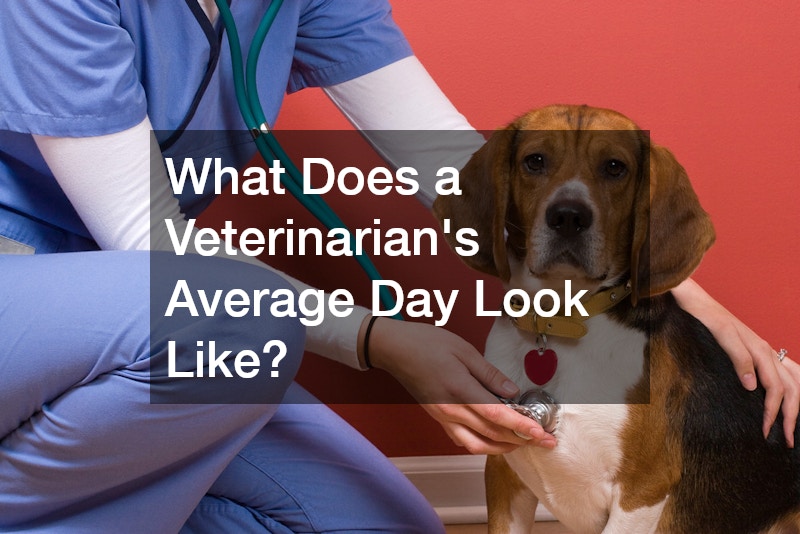
Understanding the daily routine of a veterinarian offers valuable insight into the dedication, expertise, and compassion required to care for animals of all kinds. From routine check-ups and preventive care to complex emergency procedures, veterinarians play a crucial role in safeguarding the health and welfare of pets, livestock, and sometimes even wildlife. A veterinarian’s day is often a dynamic blend of medical, administrative, and emotional tasks, demanding not only technical skill but also patience and empathy.
They follow a structured yet flexible routine that adapts to the unpredictable nature of animal health needs, reflecting the wide variety of species they care for and the unique challenges each case presents. This multifaceted role highlights the essential contributions veterinarians make to both animal and community well-being.
How Do Veterinarians Begin Their Day?
A veterinarian’s day typically begins early with a review of the schedule and preparation for the patients expected. This morning routine often includes organizing appointments, reviewing medical histories, and ensuring that all necessary equipment and supplies are ready. Patient examinations are a primary focus at the start of the day. Veterinarians carefully assess each animal’s health status, performing physical exams, updating vaccination records, and discussing any concerns with pet owners or animal handlers. This preparation sets the tone for an efficient and effective workday, allowing the veterinarian to prioritize care and anticipate any special needs.
What Types of Animals Do Veterinarians Commonly Treat?
Veterinarians encounter a wide range of animals throughout their day. While household pets such as dogs and cats make up a significant portion of their caseload, many veterinarians also care for farm animals including horses, cattle, sheep, and goats. This diversity means that a veterinarian must be knowledgeable about multiple species and their specific health concerns. The variety keeps each day interesting and challenging, as veterinarians adapt their approach to suit the unique needs of each patient. Whether it’s routine wellness care for a dog or emergency treatment for a horse, veterinarians are equipped to handle an array of animal health issues.
What Are the Most Common Procedures Performed by Veterinarians?
Throughout their day, veterinarians perform numerous procedures that range from routine to urgent. Common medical procedures include vaccinations, dental cleanings, and wellness exams. These preventive measures are critical in maintaining the health of pets and livestock alike. In addition to these routine tasks, veterinarians often handle surgical procedures such as spaying and neutering or wound treatment. Emergency care is also a significant part of their day, requiring quick decision-making and skilled intervention to save lives. The combination of planned procedures and unexpected emergencies demands that veterinarians remain flexible, knowledgeable, and calm under pressure.
How Do Veterinarians Manage Their Administrative Tasks?
Beyond the hands-on medical work, veterinarians also spend a substantial amount of time managing administrative duties. These tasks include maintaining detailed patient records, processing lab test results, ordering medical supplies, and handling billing and insurance paperwork. Effective administration is essential to ensure the clinic operates smoothly and complies with legal and ethical standards. Many veterinarians balance these responsibilities between patient appointments or delegate them to support staff. Despite the demands of paperwork, this aspect of their job is vital for tracking treatment outcomes and providing continuity of care.
What Challenges Do Veterinarians Face on a Daily Basis?
The role of a veterinarian comes with several challenges that test their resilience and commitment. One of the primary difficulties is managing the emotional toll of caring for sick or injured animals, especially when treatment options are limited or outcomes are uncertain. Veterinarians often develop strong bonds with their patients and owners, making difficult decisions emotionally taxing. Additionally, the physical demands of handling large or aggressive animals can be strenuous and sometimes hazardous. Time management is another challenge, as veterinarians must juggle patient care, emergencies, and administrative work within tight schedules. To cope, many veterinarians rely on strong support networks, continuous education, and self-care practices to maintain their well-being.
Final Thoughts
The average day of a veterinarian is a testament to the complexity and importance of their profession. Their work involves much more than medical treatment; it includes compassionate communication, precise administrative management, and navigating the physical and emotional challenges of animal care. Understanding what veterinarians do daily helps highlight their essential role in the community. From tending to a beloved pet’s health to ensuring the welfare of farm animals, veterinarians are dedicated professionals whose efforts contribute significantly to the health and happiness of animals and the people who care for them.

